Ok, i think becuase the light is flashing it is the PSU (power supply unit

)
Things to consider when purchasing a new power supply:
Motherboard connection type
Specialized units, (Dell, Compaq / HP and others)
Warranty (You may void it by replacing a factory supply on your own)
Wattage needed (look at the back of your existing supply)
Noise level
Desired power efficiency If you Wanna to try your friends power supply read the below
You will need to open your computer’s case, of course. With the computer facing you, the panel on the left side is normally the one removed for service. Often a manufactured PC such as Compaq, Dell and so on will have some sort of locking mechanism which must be negotiated. In these cases you will want to consult your manuals or on-line documentation. You should also check to make sure replacing the power supply won’t void your warranty. (If you are still in warranty and replacing a failed supply the vendor should provide one for you if not do the work themselves) If you plan to open your computer case for any reason you should invest in an anti-static mat. These go for around 20 bucks and will keep you from destroying parts of your computer with static electricity.
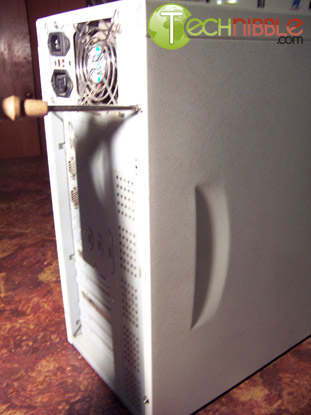
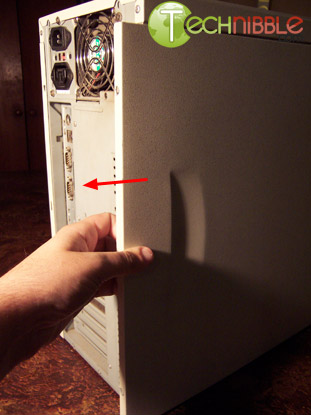
With the computer open, turn the open service panel side towards you. The power supply is usually located at the top left and is normally a grey, aluminum enclosed box with fans. Unless you’ve cleaned your computer lately you may want to be prepared for a great deal of dust as this is one of the locations which accumulate it. The power supply is normally attached using four Phillips-head screws, accessed from the back panel of the case. Prior to removing these, you will need to disconnect the various internal power leads from the motherboard, hard drives, CD / DVD and elsewhere. If you are not familiar with this process you should take notes of the number / type of connections and where they are prior to removing them. Also pay attention to the way the power cables are routed; if they are arranged neatly so as to minimize the impact on airflow / cooling you’ll want to do the same with the replacement ones.
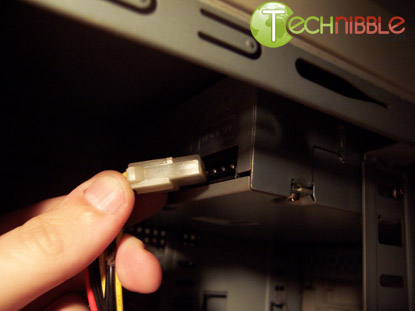
Supporting the power supply with one hand, remove the screws from the back and it should slide out of the case. Sometimes the power supply slides through the back panel and is attached differently, checking the on-line documentation for your case or PC supplier should provide the information needed.
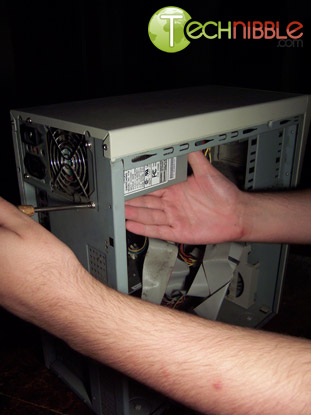
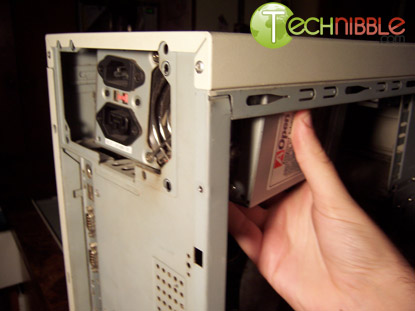
Installation is the reverse. You’ll want to attach the power supply to the case first. Then you can begin connecting the various power cables paying using an order which best will enable routing the cables. Paying attention to the routing will pay dividends in the overall temperature of the computer as well as the energy use as today’s computers have variable speed fans controlled by temperature. Once all the connections are made double check them to make sure they are completely plugged in and secure, especially the motherboard connections. Replace the mains power and keeping your hands clear of the open case, power up the computer. Check to make sure all the applicable cooling fans are running and that the PC boots. Power the computer back down, pull the mains power again and replace the service panel. Once everything is back in place, reboot the computer and using the power supply documentation, log into the PC Bios so you can set any power supply specific settings. Some of the newer supplies use variable speed fans with trigger levels which are set in the bios. You may also want to enable some other settings if you have the goal of increasing your computers power efficiency.
Enable Hibernation If you’re like me and have a desktop which is in constant use the hibernation feature in newer PCs wakes up very quickly and has huge power savings potential.
Configure hard drives to “sleepâ€Â? after 15 minutes of inactivity. (Usually in the power menu which is a sub of the screen saver panel - right click on desktop). If you have quite a few drives like me, most of them aren’t being used except as needed.
Check your computers bios to see if the cooling fans are variable speed or have a “quiet� setting. The temperature sensor in the motherboard controls this function.
Replace your CRT monitor with an LCD one and configure it to sleep in the display menu rather than using a screensaver.
Some power supplies I find interesting:
The FSP-300 “Zen”, a fan-less / high efficiency model with 300 watts output. Torture Test Review
The Antec Phantom, another fan-less / high efficiency model with 500 or 350 watts output. Torture Test Review
If you plan to use one of the fan-less power supplies keep in mind that thermal output is always a reality. Without fans to carry the heat away the fan-less power supplies use heat sinks instead which transfer the heat to the inside of your PC case. You’ll want to monitor your computer’s temperature to make sure the case cooling design can handle the added ambient heat.
Above article
http://www.technibble.com/how-to-replace-a-power-supply-and-buy-a-good-one/